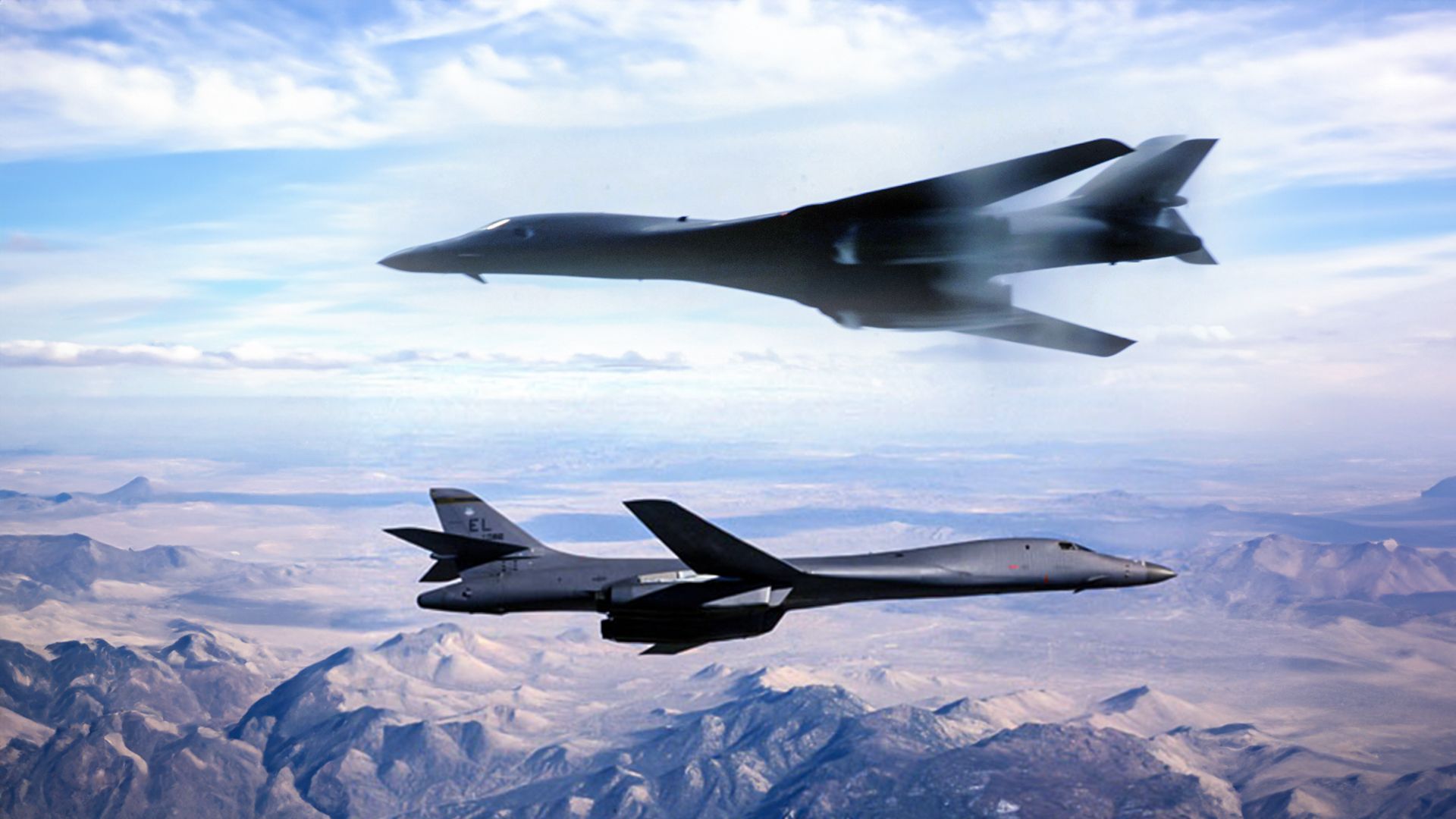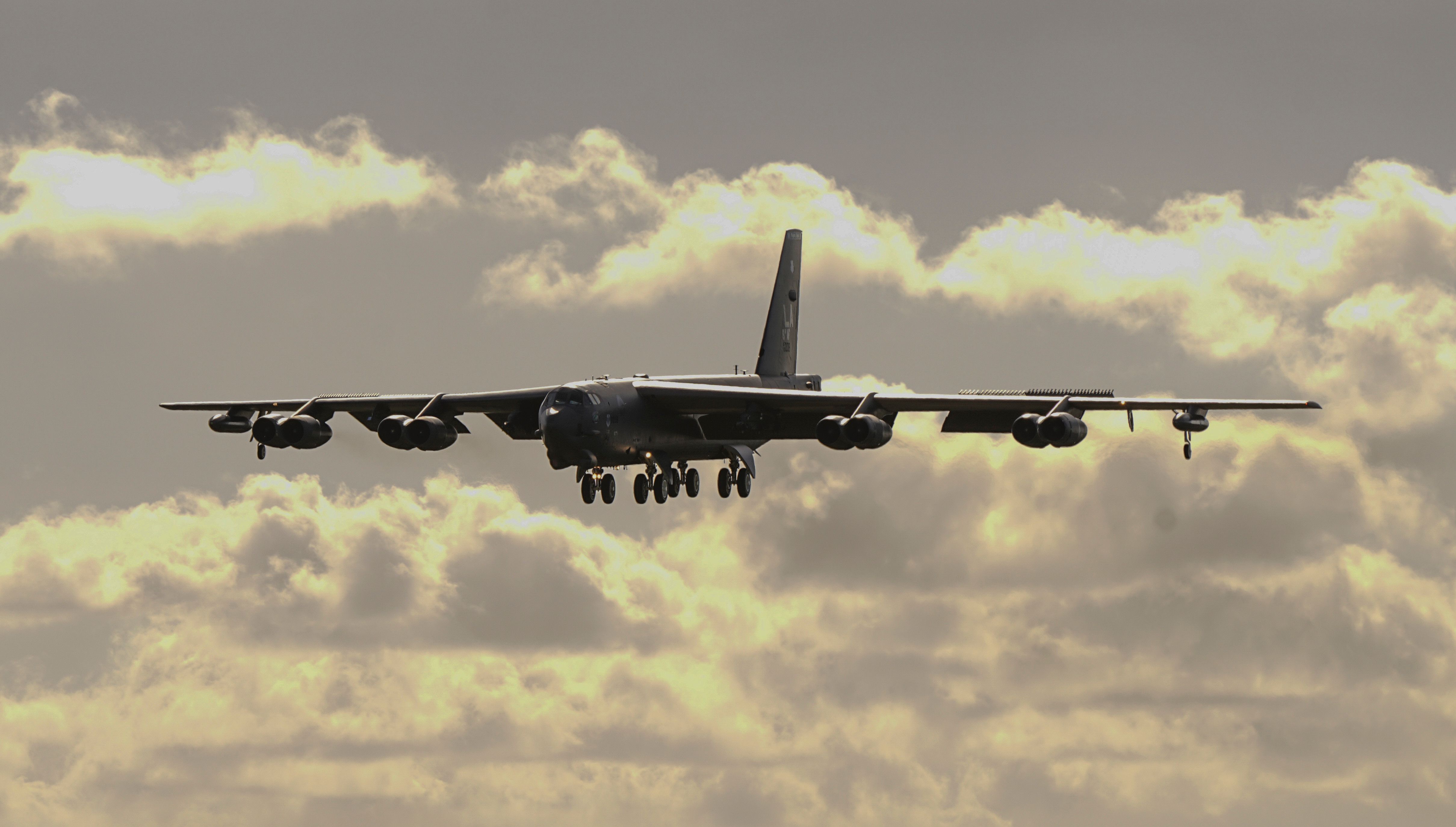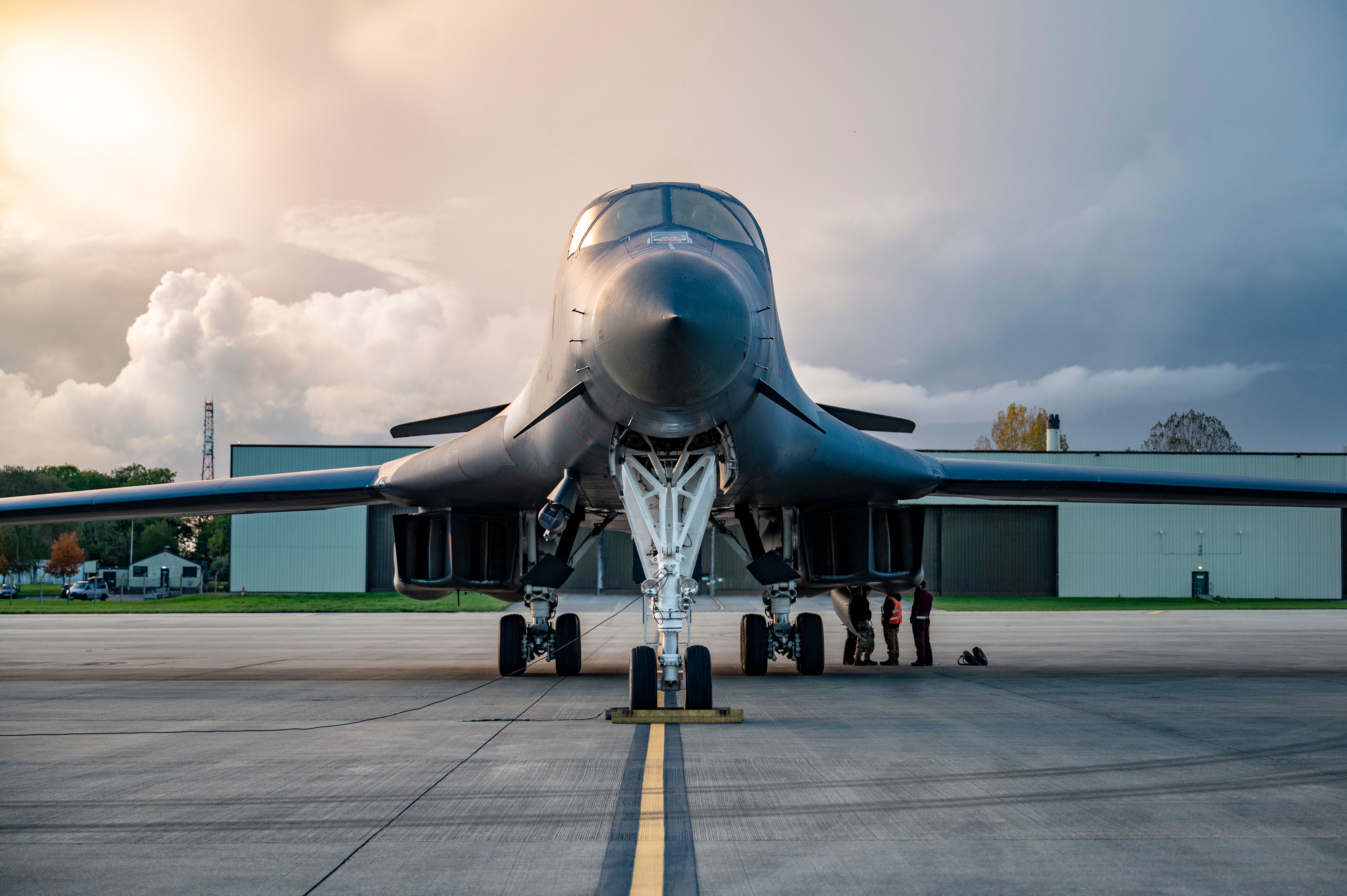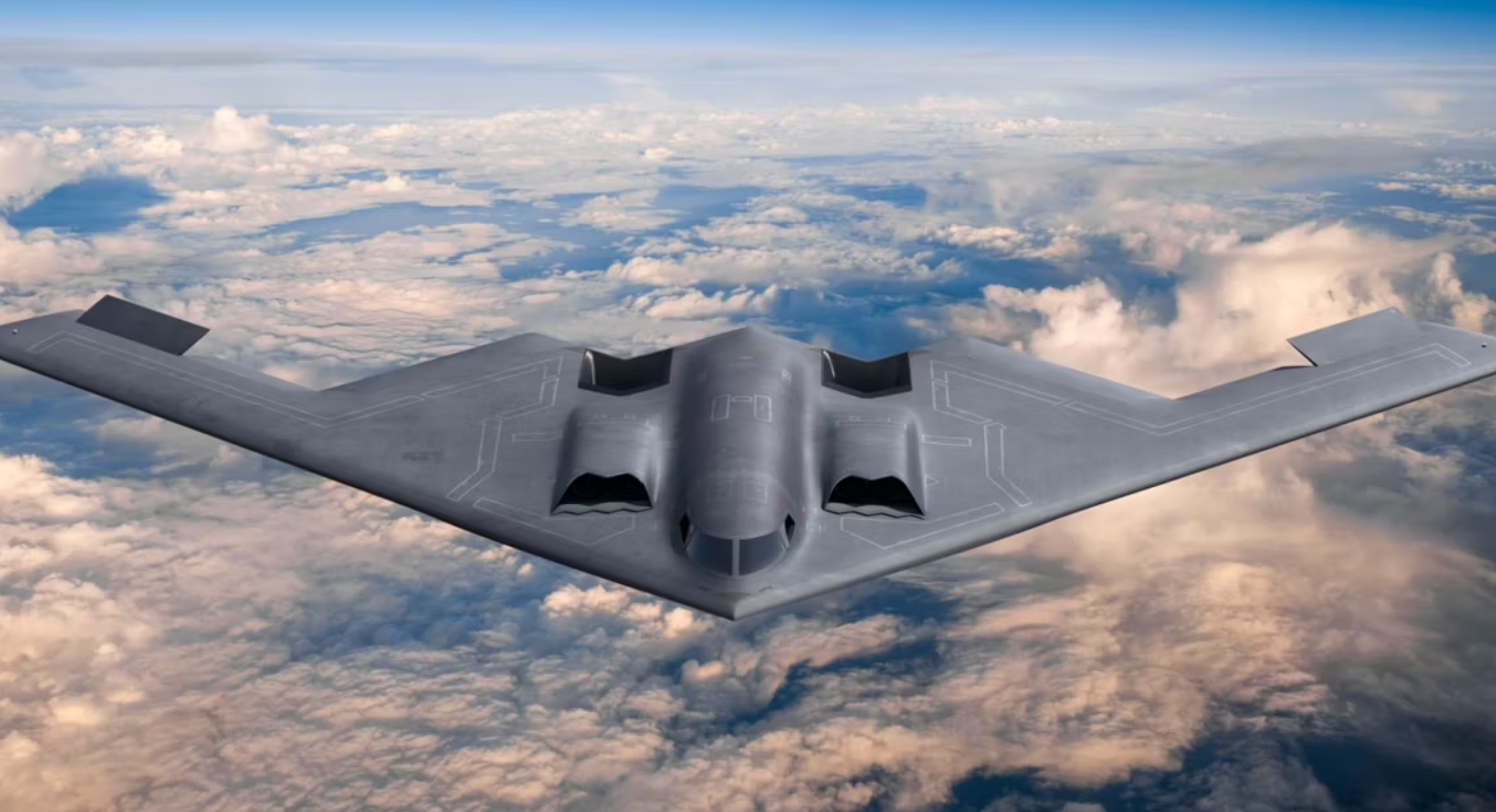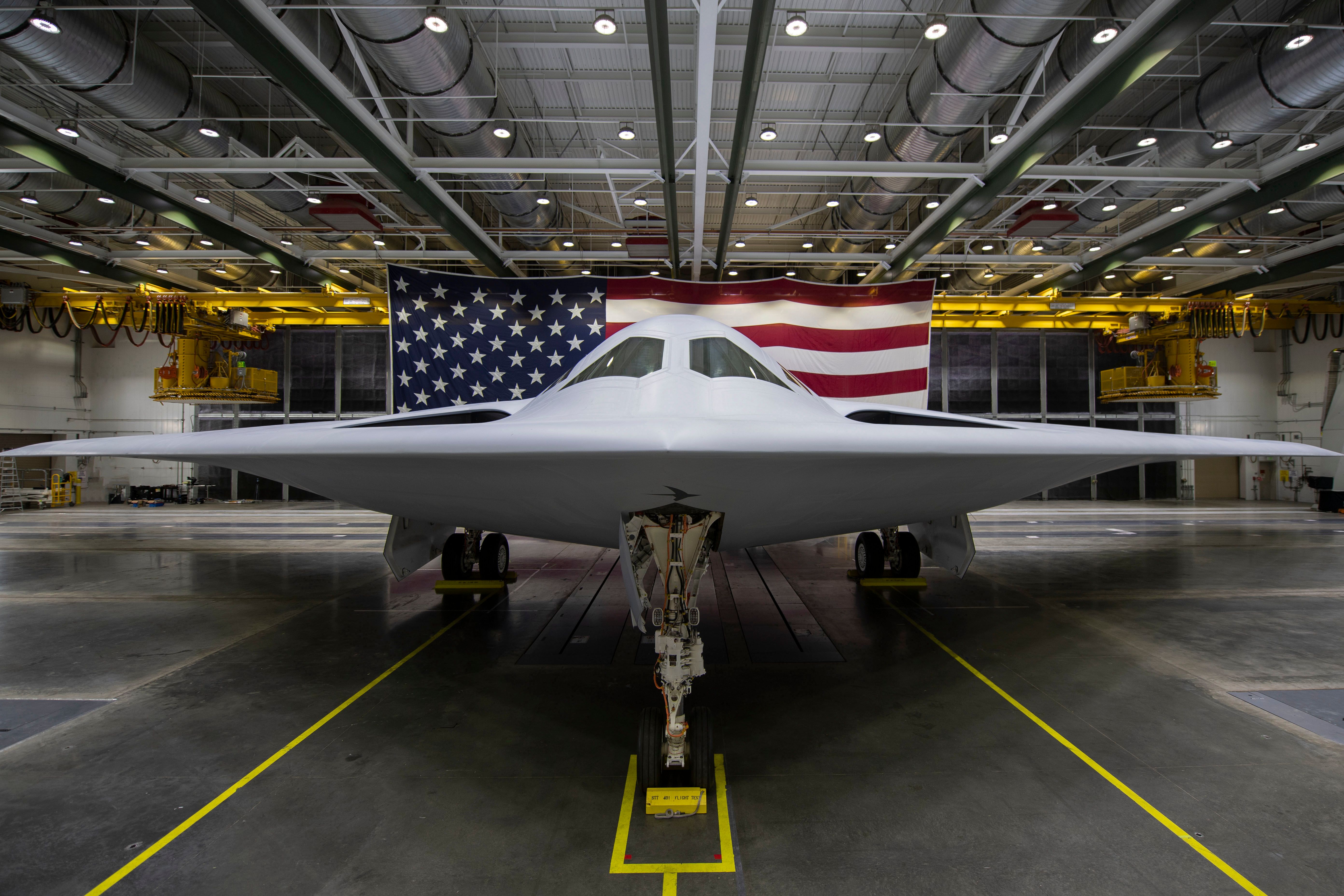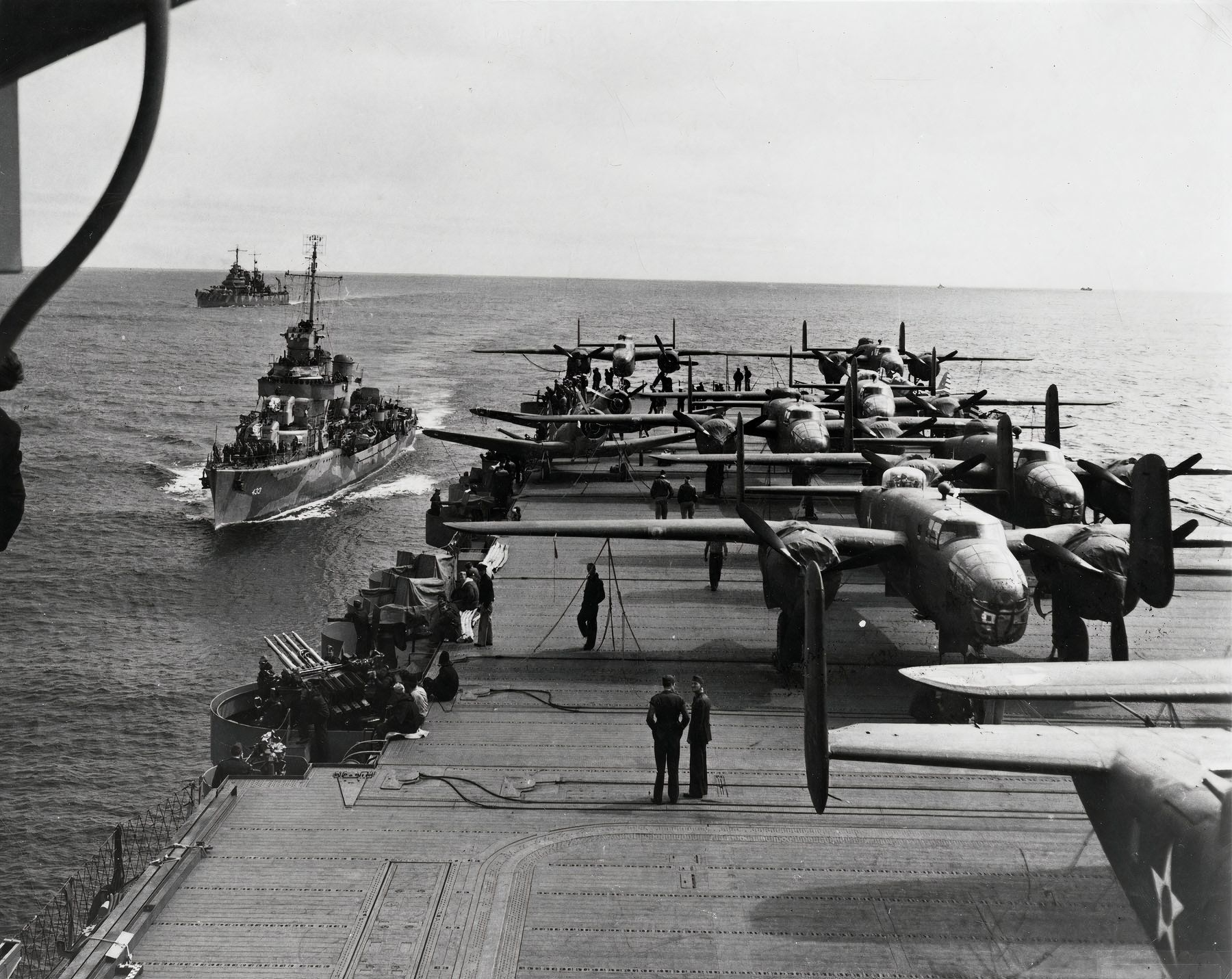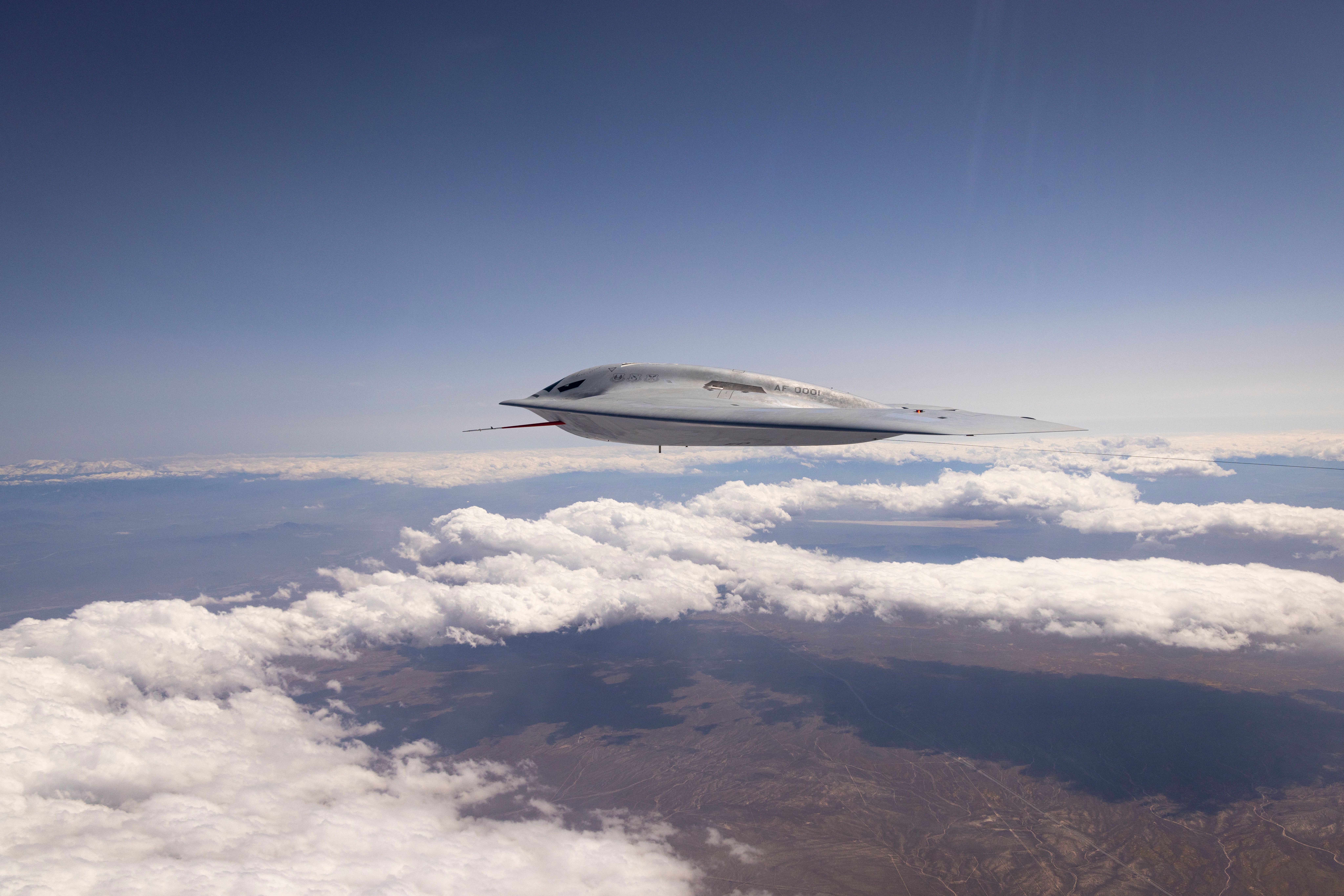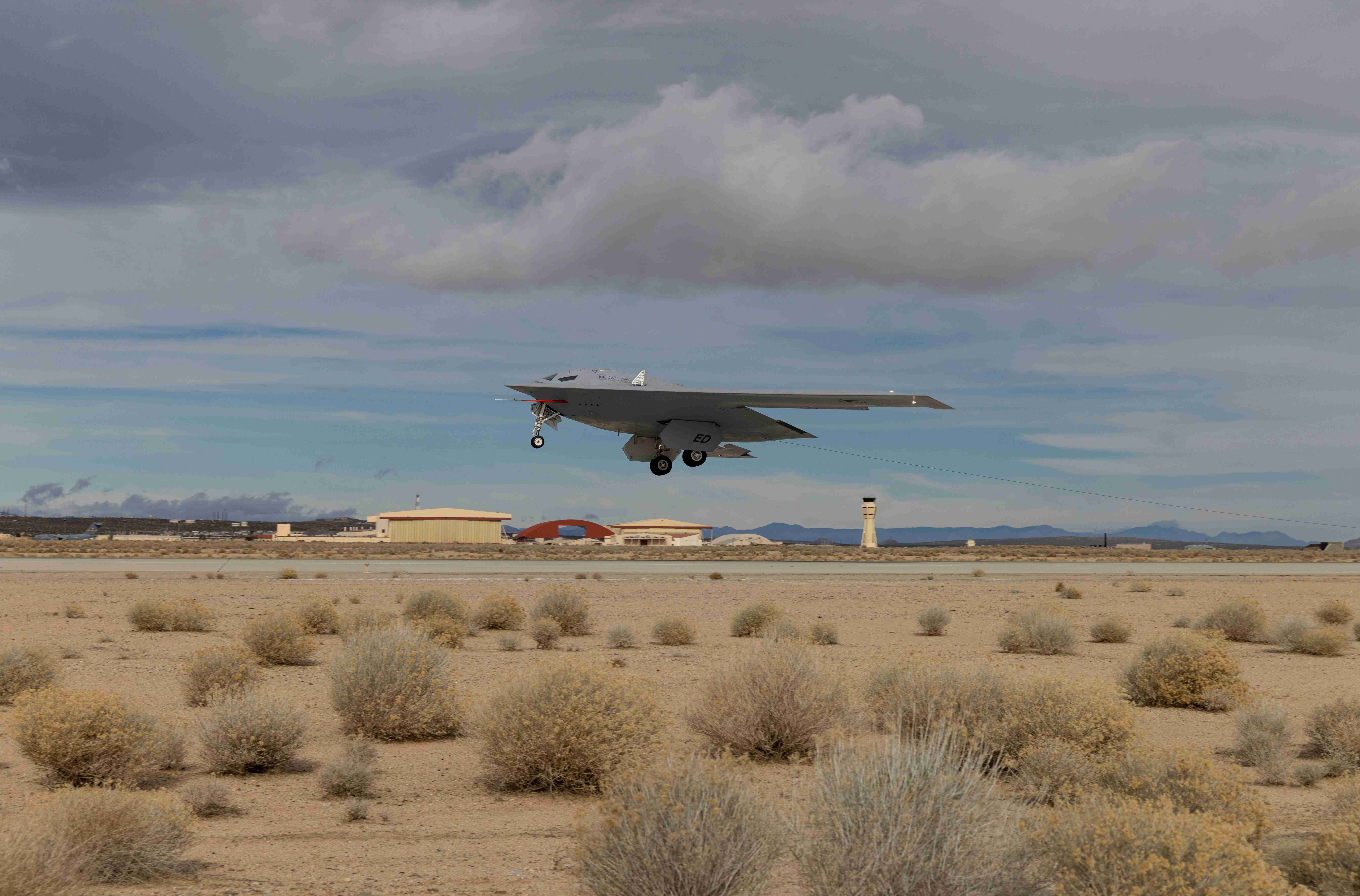Summary
- The B-52 Stratofortress, also known as “BUFF,” remains active and relevant, dropping more bombs than any other aircraft.
- The B-1B Lancer, or “The Bone,” replaced the B-1A. It can carry a large payload and has played a significant role in various operations.
- The stealthy B-2 Spirit, unveiled in 1988, features advanced technology, reduced radar cross-section, and played key roles in various conflicts.
Throughout its history, the United States Air Force has boasted an impressive arsenal of strategic bombers, each playing a pivotal role in maintaining national security and projecting power on the global stage. In this article, we’ll look at four of the USAF’s most iconic bombers: the B-52 Stratofortress, B-1B Lancer, B-2 Spirit, and the highly anticipated B-21 Raider.
The big, ugly, fat fella
In the aftermath of World War II, amidst increasing concerns about the nuclear threat from the Soviet Union during the Cold War, the United States Strategic Air Command (SAC) wanted an aircraft that could fly long distances and employ the latest, most advanced weapons. Boeing answered the call with the iconic B-52H Stratofortress.
Photo: Tech. Sgt. Richard P. Ebensberger | U.S. Air Force
First flown in 1952 and amazingly still active today, this long-range heavy bomber, affectionately known as “BUFF” (Big Ugly Fat Fella), has dropped more conventional bombs than any other aircraft.
The B-52H, the bomber’s most recent variation, is equipped with pods that provide advanced long-range target detection and identification. It can carry up to 70,000 pounds (31,500 kilograms) of ordnance, including nuclear and precision-guided bombs and missiles. The B-52 tail gunner position was deactivated in 1991 as part of an adaptation to modern warfare.
Thanks to aerial refueling capabilities, the B-52 once completed an incredible 34-hour combat mission during Operation Desert Strike in Baghdad.
Despite weighing in at 185,000 pounds (83,250 kilograms), the flying behemoth can reach altitudes up to 50,000 feet (15,166.6 meters) and fly at subsonic speeds up to 650 miles per hour (Mach 0.84), thanks to its eight Pratt & Whitney TF33-P-3/103 turbofan engines, each producing up to 17,000 pounds (7711 kg) of thrust. The U.S. Air Force plans to begin upgrading their fleet of B-52H engines to Rolls Royce F130 engines in 2028, ushering in a new B-52J designation.
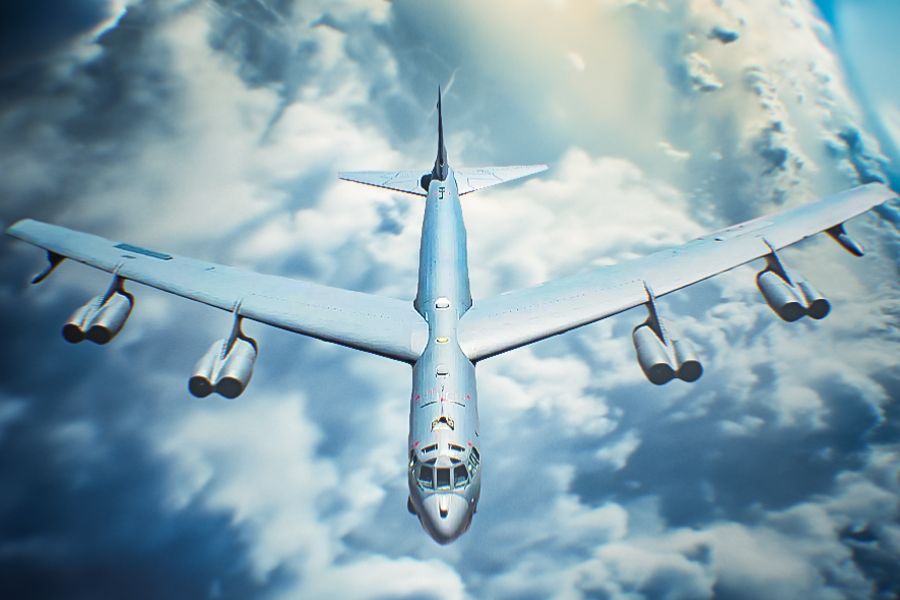
Related
3 Key Ways The US Is Extending The Service Life Of The B-52 Bomber
The B-52 bombers are expected to fly well into the 2050s.
Whether through nonstop peace-keeping missions during the Cold War, delivering nearly half of all coalition weapons dropped during Operation Desert Storm in 1990, or flying 1,800 combat sorties against ISIS forces in Syria and Iraq in 2016, the enduring B-52 Stratofortress remains highly relevant amidst the USAF’s modern bomber force. With plans to operate B-52Js into the 2050s and, perhaps, beyond, this legendary bomber that has seated three generations of pilots in its cockpit remains a mighty staple in the U.S. Air Force’s vast arsenal.
B-52 Stratofortress dimensions:
- Height: 40 feet, 8 inches (12.4 meters)
- Weight: Approximately 185,000 pounds (83,250 kilograms)
- Length: 159 feet, 4 inches (48.5 meters)
- Wingspan: 185 feet (56.4 meters)
A new breed of bombers
The B-1B Lancer’s roots can be traced back to the early 1970s as the B-1A, initially developed by Rockwell International, which Boeing would later absorb. Intended to replace the B-52 Stratofortress, the B-1A had a top speed of Mach 2.2, variable aspect engine intakes, and featured an escape capsule designed to eject the entire crew collectively. The Carter administration ultimately scrapped the project in 1977 due to delays, concerns over costs, and the lack of stealth technology that was in development at the time.
Photo: Airman 1st Class Emma Anderson | U.S. Air Force
In 1981, the project was revived by the Reagan administration, and the B-1B Lancer was born. Contemporary mission requirements called for reduced speeds at lower altitudes, with a larger payload capacity than the B-1A, and the “escape capsule” concept was left behind in favor of a more traditional egress system. In 1986, the Boeing B-1B Lancer, also known as “The Bone” (B-one), was introduced, able to carry a massive conventional payload of up to 75,000 pounds (34,019 kilograms), the largest of any U.S. Air Force aircraft. Munitions aboard the B-1B Lancer would include some combination of the following:
- 84 500-pound Mk-82 or 24 2,000-pound Mk-84 bombs
- 84 500-pound Mk-62 or 8 2,000-pound Mk-65 Quick Strike naval mines
- 30 cluster munitions (CBU-87, -89, -97) or 30 Wind-Corrected Munitions Dispensers (CBU-103, -104, -105)
- 24 2,000-pound GBU-31 or 15 500-pound GBU-38 Joint Direct Attack Munitions
- 24 AGM-158A Joint Air-to-Surface Standoff Missiles
- 15 GBU-54 Laser Joint Direct Attack Munitions
- (Nuclear capabilities were eliminated from the B-1B in 1994 as part of the Strategic Arms Reduction Treaty (START) with Russia.
“In two flights, Oct. 25 and 26, the B-1B set 45 world records and broke five previously set records in the National Aeronautic Association C-1Q and C-1R, Group III weight class.” U.S. Air Force, 95th Air Base Wing Public Affairs
The B-1B Lancer’s four General Electric F101-GE-102 turbofan engines with afterburner produce over 30,000 pounds (13,607 kg) of thrust per engine, allowing the bomber to reach supersonic speeds up to 900 mph (Mach 1.2), while variable-geometry wings provide superior maneuverability. Blending speed and agility, along with intercontinental range, the B-1B Lancer can seamlessly integrate with fighter aircraft on a variety of global strike missions. With its mammoth size and immense payload that belies its surprising speed and maneuverability, the B-1B Lancer is a marvel of engineering and design.
The B-1B Lancer played a significant role in the following conflicts:
- 1998: Operation Desert Fox
- 1999: Operation Allied Force
- 2001-2014: Operation Enduring Freedom
B-1B Lancer dimensions:
- Height: 34 feet (10.4 meters)
- Weight: 190,000 pounds (86,183 kilograms)
- Length: 146 feet (44.5 meters)
- Wingspan: 137 feet (41.8 meters) extended forward, 79 feet (24.1 meters) swept aft
The stealth era begins
Unveiled in 1988, the Northrop Grumman B-2 Spirit, commonly referred to as the “Stealth Bomber,” is a versatile, long-range aircraft featuring low-observable “stealth” technology, capable of penetrating sophisticated defenses to deliver conventional and nuclear munitions to an enemy’s most valued and highly protected targets.
Photo: Mike Mareen l Shutterstock
Inside its two internal bomb bays, the B-2 can hold up to 40,000 pounds (18,144 kg) of conventional, nuclear, and precision-guided weapons, including the AGM-129 advanced strategic cruise missile with an estimated range of 1,500 miles. Countermeasures include Lockheed Martin’s radar warning receiver, AN/APR-50 defensive management system (DMS), and a Northrop Grumman defensive aid system.
While much of the B-2’s stealth technology remains classified, a few key characteristics are known. The aircraft’s 80% carbon graphite composite exterior is coated in anti-reflective paint and eschews traditional angled surfaces for curved surfaces, aiding in radar detection avoidance. With its low-drag wing configuration and four General Electric F118-GE-100 turbofan engines located internally within its wings, the B-2 has a reduced heat signature, which helps to combat infrared detection.
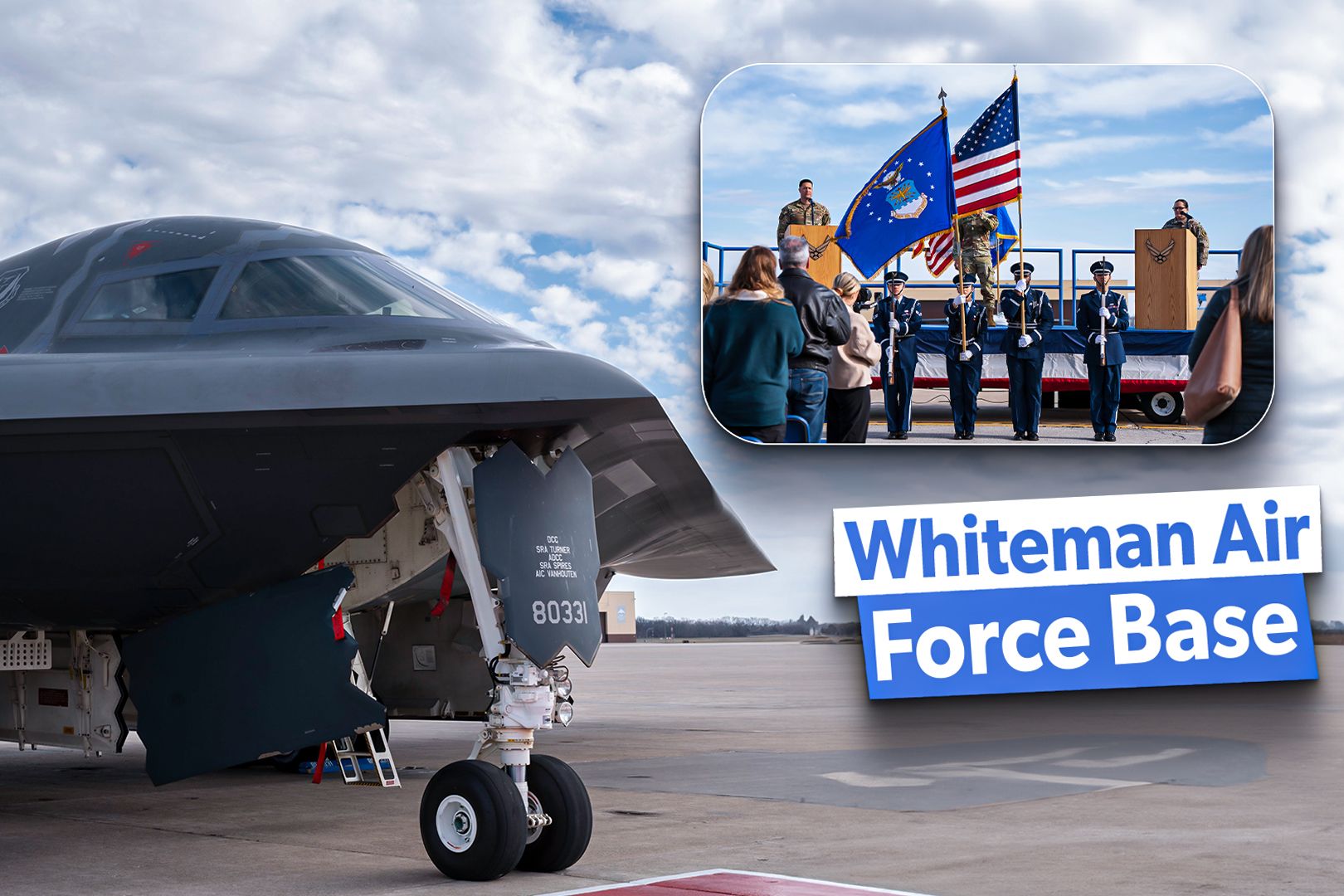
Related
A Quick Guide To Whiteman Air Force Base: Home Of The B-2 Spirit Bomber
The Air Force plans to operate the aging B-2s until 2032.
Wider than it is long, and lacking a fuselage or tail, the B-2’s unique “flying wing” aeronautical design significantly reduces its radar cross-section. While the B-52 Stratofortress is said to have a radar cross-section of 100 m2, the B-2 is believed to have a radar cross-section of just 0.0001 m2, aiding in avoiding radar detection. In 1990, the U.S. Air Force released a report entitled, ”Bomber Modernization: Deterrence at the Crossroads,” in which the radar cross-sections of ships, aircraft, insects, and birds were compared. When asked in which category the stealthy B-2 would fall, Air Force Chief of Staff, Gen. Larry D. Welch replied,
”It’s in the insect category. The B-2’s significantly reduced radar cross section minimizes the detectability of the B-2 to the point it can operate with virtual impunity.” Air Force chief of staff, Gen. Larry D. Welch, as reported by the New York Times
The sole operational base for the B-2 bomber is Whiteman AFB, Missouri.
The B-2 Spirit played a significant role in the following conflicts:
- 1999: Operation Allied Force
- 2001-2014: Operation Enduring Freedom
- 2003-2011: Operation Iraqi Freedom
B-2 Spirit dimensions:
- Wingspan: 172 feet (52.12 meters)
- Length: 69 feet (20.9 meters)
- Height: 17 feet (5.1 meters)
- Weight: 160,000 pounds (72,575 kilograms)
The future is now
Photo: U.S. Air Force
With an eye toward the future of modern warfare, the U.S. Air Force has partnered with Northrop Grumman to welcome the newest member of its bomber force and the first sixth-generation aircraft to take flight, the awe-inspiring B-21 Raider. Named in honor of the Doolittle Raid of World War II in 1942 (pictured below), a mission considered to have paved the way toward U.S. air superiority, the B-21 Raider stands as the future of the USAF strategic bomber force, intended to replace the B-2 Spirit and B-1B Lancer.
Photo: U.S. Air Force
Photo: U.S. Air Force
The B-21 Raider, in development since 2015 and expected to be operational by the mid-2020s, is a multi-function long-range bomber capable of delivering conventional and nuclear munitions and leading the way in surveillance and reconnaissance, intelligence gathering, communications, and electronic attack missions. Improving upon the B-2 stealth technology, the B-21 is virtually undetectable and capable of manned or unmanned missions.
“Fifty years of advances in low-observable technology have gone into this aircraft. And even the most sophisticated air-defense systems will struggle to detect a B-21 in the sky.” Secretary of Defense Lloyd J. Austin III, U.S. Dept. of Defense
As evidenced by its open systems architecture, the B-21’s design focused on sustainability, maintainability, and the ability to adapt to future technologies. Every effort is being made to ensure the B-21 remains on the cutting edge of air superiority for decades.
“The Raider was built with an open-system architecture, which makes it highly adaptable. So as the United States continues to innovate, this bomber will be able to defend our country with new weapons that haven’t even been invented yet.” Secretary of Defense Lloyd J. Austin III, U.S. Dept. of Defense
Little is known about the secretive B-21 raider, though its recent 140-minute first flight and associated images present a few revelations. The test model, nicknamed “Cerberus” after the mythical watchdog of the underworld, looks similar to the B-2, though even more saucer-like and with significant differences.
Photo: U.S. Air Force
Gone is the B-2’s serrated tail in favor of a simpler “W” shape, indicating the B-21 will fly at higher altitudes, and its light gray appearance suggests the raider will perform missions both day and night. While the B-2 has four secondary air intake doors providing supplemental air when needed to each of its four engines, the B-21 has just two such doors, indicating the B-21 has two engines. However, this remains a speculation as engine specifications are unknown.
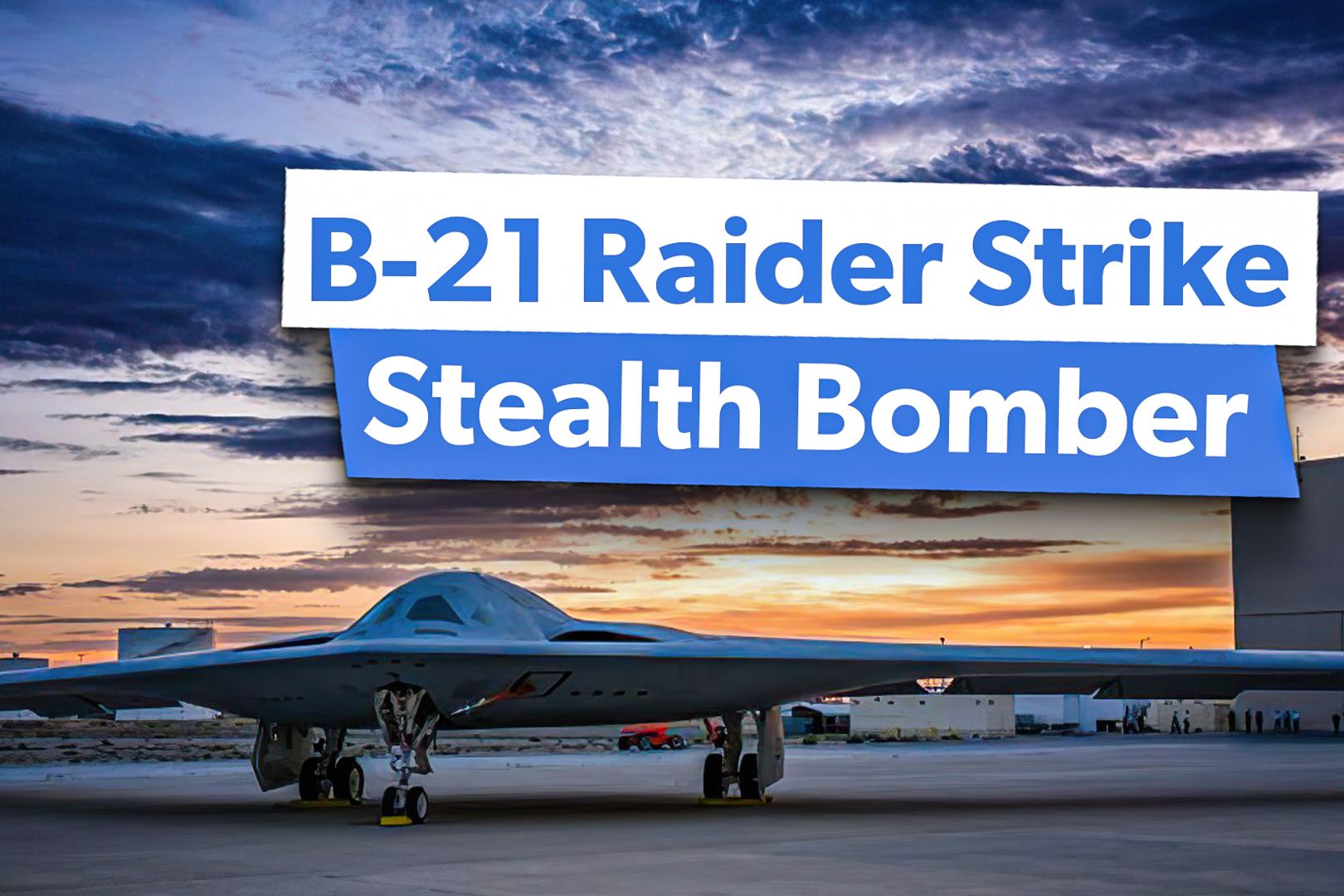
Related
5 Fast Facts About The USAF’s Next-Gen B-21 Raider Strike Stealth Bomber
The performance and mission capabilities of the B-21 Raider are yet to be revealed.
As details of the USAF’s newest bomber continue to emerge, we can expect the B-21 Raider to represent the pinnacle of aeronautical engineering and military strategy. A testament to American innovation, ingenuity, and resolve, the B-21 Raider, alongside ol’ “BUFF,” merges the past with the present, shaping the future of the U.S. Air Force.
Photo: U.S. Air Force
B-21 Spirit unofficial estimated dimensions:
- Wingspan: 150 feet (46.72 meters)
- Height: 18 feet (5.49 meters)

